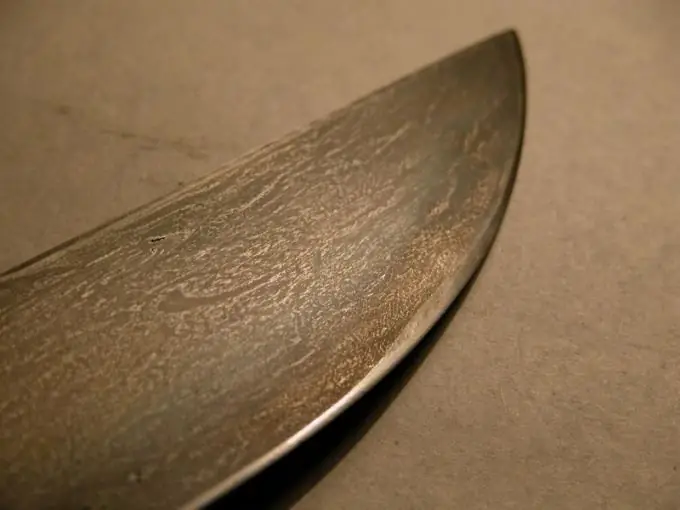Bulat is a steel that, thanks to its unique manufacturing technique, acquires a special surface structure that provides increased elasticity and hardness. Since ancient times, this material has been used for the manufacture of high quality edged weapons, since modern materials do not have such a combination of hardness, elasticity, the ability to keep a sharpened state, malleability.

Instructions
Step 1
In terms of chemical parameters, damask steel differs from ordinary steel in a high carbon content in its composition, however, in terms of its physical characteristics, damask steel retains malleability characteristics characteristic of low-carbon steel, and after hardening the metal it becomes even harder than low-carbon metal, which is associated with the internal structure of damask steel. In appearance, damask steel can always be distinguished due to the presence of a chaotic pattern on the surface, which is formed during crystallization.
Step 2
There are many ways to create damask, both modern and traditional. Today the damask is being melted. Load the components of damask steel into the steelmaking furnace: steel with a low carbon content or iron, which melts at temperatures of about 1650 degrees. After that, add silicon and aluminum to the molten metal, and only then - graphite. In this way, synthetic pig iron is formed in the furnace, where the carbon content will be about 3 percent.
Step 3
Next, add fine shavings of soft iron or low carbon steel to the molten cast iron. These shavings or small pieces of metal must be dry and clean with no signs of oxidation on the surface. It is necessary to introduce the shavings gradually, its total mass should be from 50 to 70 percent of the mass of the cast iron in the furnace.
Step 4
When the shavings are melted, the metal becomes like a slurry, therefore, with each new introduction of pieces of metal, the furnace must be reheated. After adding the entire volume of chips, the metal is reheated, but only to a state in which it retains an inhomogeneous structure.
Step 5
After that, pour the resulting damask steel into a graphite mold or leave it in the oven to solidify. In the first case, damask steel with ferrite interlayers and a lower carbon content (up to 0.05%) is formed, and in the second, damask steel with carbon interlayers and a high carbon content (up to 1%).






